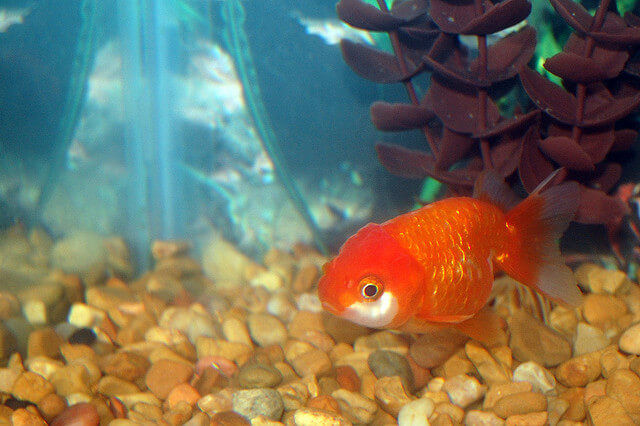The ranchu goldfish is a fascinating and highly sought-after variety among goldfish enthusiasts. With its distinctive appearance and graceful demeanor, the ranchu captivates the hearts of aquarists worldwide. In this guide, we will explore the remarkable features of the ranchu goldfish and provide valuable insights on how to care for this regal beauty.

Physical Characteristics
One of the most noticeable features of the ranchu goldfish is the absence of a dorsal fin. Show-quality ranchus possess a clean, arched back without any hint of a dorsal fin. The back of the ranchu showcases a pronounced upward arch, which gracefully curves downward at the peduncle and caudal fins. This unique curve directs the pair of divided caudal fins downward, creating a visually appealing aesthetic. The optimal angle between the back curve and the upper lobes of the caudal fins should be approximately 90 degrees.
Distinctive Wen Hood Cover
he ranchu goldfish boasts a prominent wen hood cover, which is larger than that of the oranda goldfish. This wen hood cover envelops the entire head and face, excluding the eyes. In some exceptional specimens, the wen hood may extend to the cheeks and gill covers, resembling the majestic mane of a lion. It is worth noting that the Chinese version of the ranchu is aptly named the “lionhead” due to this resemblance. While the ranchu goldfish from Japan and the lionhead goldfish from China share the same breed, minor differences in appearance set them apart.
Striking Color Variations
Ranchu goldfish exhibit a wide array of captivating colors, allowing aquarists to enjoy a diverse range of options. Metallic self-colored ranchus are available in shades of vibrant orange or striking red and black. Variegated ranchus showcase captivating combinations of red and white, creating a visually stunning pattern that adds depth and character to their appearance. Additionally, red-and-white nacreous ranchus boast a captivating mother-of-pearl-like coloration known as “sakura nishiki,” while calico nacreous ranchus, known as “edo nishiki,” display a captivating blend of colors reminiscent of traditional Japanese artwork. The diverse color variations of the ranchu goldfish provide endless possibilities for creating captivating underwater displays.
Care Tips
To ensure the health and well-being of your ranchu goldfish, it is essential to provide proper care and create an optimal living environment. Here are some essential care tips:
Tank Size
Ranchu goldfish require a spacious tank to accommodate their full-bodied shape. Aim for a minimum tank size of 20 gallons per ranchu to provide ample swimming space.
Water Quality
Maintain excellent water quality by regularly monitoring and adjusting parameters such as temperature (65-72 degrees Fahrenheit or 18-22 degrees Celsius) and pH levels (7.0-8.4). Utilize a reliable filtration system to ensure proper oxygenation and remove waste.
Tank Setup
Create a suitable habitat for your ranchu goldfish by incorporating aquatic plants and providing hiding spots. Ensure the tank has low flow rates to prevent stress, injury, or disease, as ranchus are not strong swimmers.
Nutrition: Feed your ranchu goldfish a balanced diet consisting of high-quality goldfish pellets, flakes, and occasional treats like bloodworms or brine shrimp. Avoid overfeeding to prevent swim bladder issues or obesity.
Conclusion
The ranchu goldfish truly exemplifies elegance and beauty with its distinct features and regal appearance. By providing proper care, a suitable environment, and a nutritious diet, you can ensure the well-being and longevity of your ranchu goldfish. Whether displayed in an indoor aquarium or showcased in an outdoor pond, the ranchu will undoubtedly captivate viewers with its grace and charm, making it a treasured addition to any aquatic enthusiast’s collection.
Sources:
- Stoskopf, M. (1993). Goldfish Varieties and Genetics: A Handbook for Breeders. T.F.H. Publications.
- Alderton, D. (2008). Goldfish: A Complete Introduction. Firefly Books.
Reviewed By: Tim Winter

Tim Winter has a strong affection for pets and wildlife. His years of experience caring for various types of pets has led him to share his knowledge with others on the best practices in pet care. Tim holds a Bachelor of Science from the University of Oregon School of Journalism and Communications.
